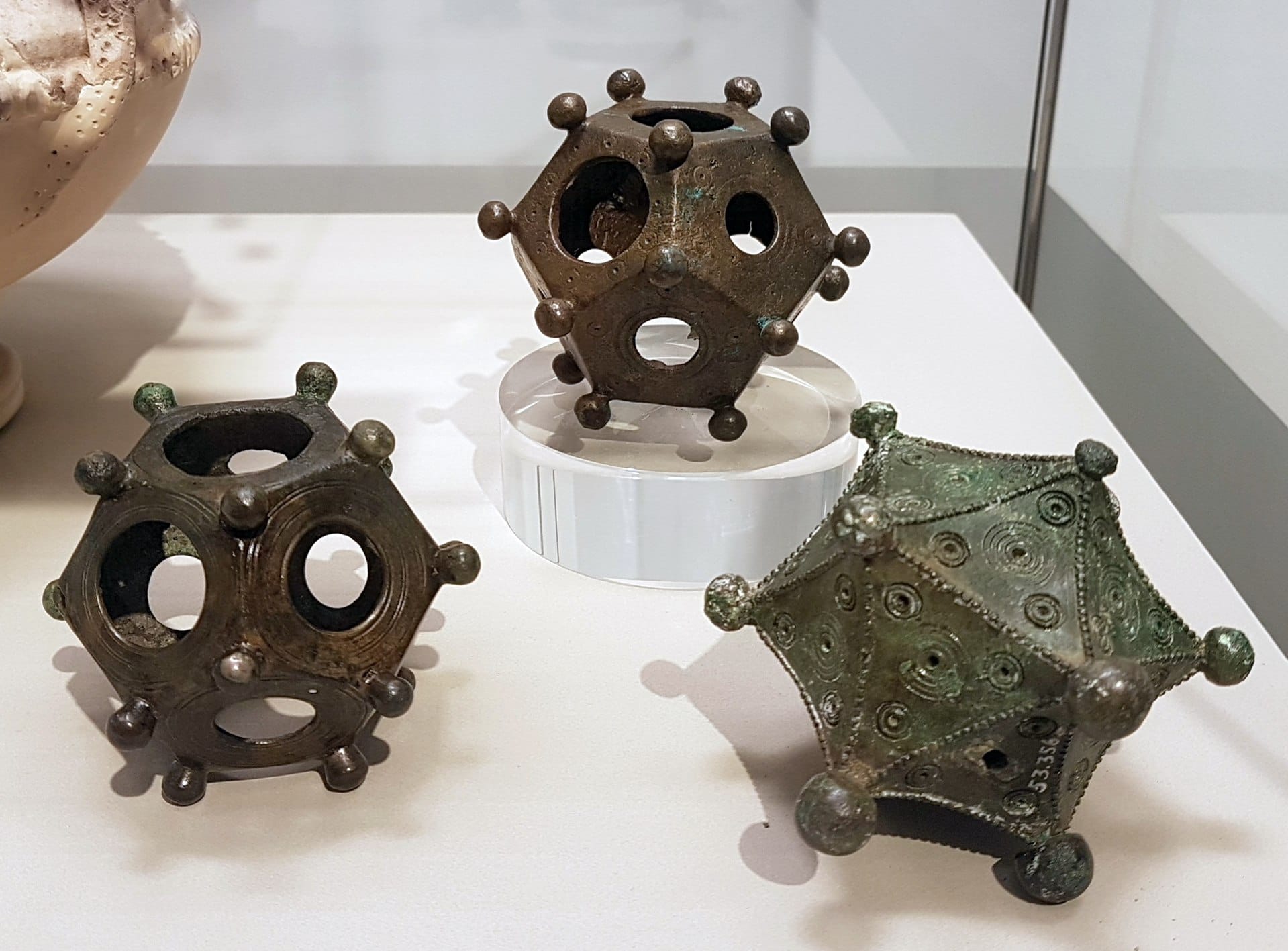That would be quite thick, and pointlessly not filled entirely. I don’t think there would be any good reason not to completely fill the void and take the chance of metal breaking through.
I’m sorry, I didn’t realize the Romans left videos. I’d like to see them.
I took a class on lost wax jewelry making. If I was to try to make a dodeck, I’d do it just like that.
The Romans didn’t leave videos; but unlike the knowledge of what these dodecahedrons were for, we have not lost the knowledge of lost wax casting; it’s been used continuously for millenia.
But I assume you know that, and are just taking potshots at this point.
Something else to consider, for a person set up to do this and one who did it a lot, making one of these with the lost wax process would be child’s play, imho.
- uses less material,
- thinner walls heat quicker and more evenly, so quicker drying, firing and preheating
- if the metal is going to break through the inner cavity wall of the mould, it’ll just as likely break through the outer wall, as they’re the same thickness.
You think an Ethiopian using goatskin bellows and a charcoal fire is using some magical modern technology the Romans didn’t have?
So did I. I’d use investment ceramic, not plaster of Paris. IMO, it’s a terrible material for casting mould making - I find it tends to spall and crack even with just pewter-level heating no matter how well you dry it out. Otherwise, I’d do it like he did too.
I’m just trying to illustrate that a mold with an unfilled center can still make the objects hollow as they are shown. Your prior comment suggests that an unfilled center will result in a solid rather than hollow object.
Moderator Note
Dial back the snark, please. This is FQ.
I have never personally done lost wax casting, but I’ve seen it done. I wouldn’t expect the center to be filled. That makes the whole object heavier and may make it cool less regularly. If it’s clay, the drying interior might even pull the rest out of alignment. I’d expect the shape to be covered with a thinnish coat of clay.
Similarly, if casting a ring, I’d expect the mold to be a donut, not a disk with a channel in it.
Having tried to make one, I think I disagree. Cutting 12 identical regular wax pentagons and joining their edges together is fairly straighforward. I wouldn’t even know how to start making a regular dodecahedron out of solid clay to use as a core - in fact if I had to do it, I would probably have to make a form by sticking pentagons stuck together.
Thin coats of clay or clay and sand are the modern way of doing lost wax (and other lost form casting such as lost PLA etc), but I’m not so sure if would have worked so well in ancient times with less refined and specialised clays; the risk of a thin mould cracking and leaking is probably greater is you have to use natural dug clay - although that problem can be mitigated by immersing and burying the mould in a box or pit of fine sand before pouring.
The Romans had very fine slip clays, so they seemed to have quite advanced clay refining techniques. They weren’t just using straight-out-of-the-ground clay. Differential clay settling from suspension is the most likely refining technique they used.
I find it interesting, although perhaps irrelevant or insignificant, that while the dodecahedrons have twelve different sized holes, the icosahedron in the image has twelve different sized knobs. Does anyone know if this was typical?
Hard to tell how much that is actually so, and how much it’s just due to perspective and/or different amounts of wear.
Assuming the knobs were cast in situ, it might just be that the ones at the bottom of the photo filled very well with the molten metal, and the ones that look smaller and pitted, at the top in the photo, filled less completely or were compromised by outgassing (which might either make them less complete, or porous and more prone to wear)
Could that icosohedron even have been cast all at once? The holes don’t seem like they’d be large enough to remove whatever was used as casting matrix.
If you fill the void with sand rather than plaster or clay slip then it should not fire into a solid mass, and be readily removable (although tedious to be sure).
Good point. I suppose it could depend on how big any other holes are that we can’t see in the photo, and the properties of the clay, and the patience of the craftsperson - a solid core of clay inside that thing could be broken up with picks and shaken out - not saying that would be quick or fun though
But how would you keep the sand in shape and offset from the outer surfaces of the mold once the wax was melted out? I guess you could maybe melt out only a small section of the wax, keep that section on top, and fill in the bronze bit by bit, or something, but that sounds like even more of a pain than getting the filler material out.
